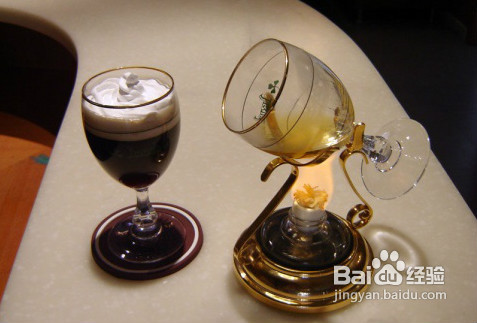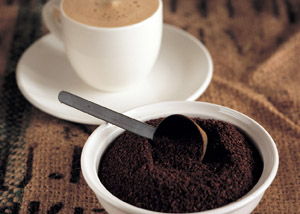Classification and Cultural Collection of Coffee
Classified editing of coffee
Coffee trees can be roughly divided into five types, of which Arabica and Robusta are more common. Arabica species, which account for more than 70% of the world's total output, are generally grown on slopes above 900 meters above sea level and are mostly found in tropical high-altitude areas such as Central and South America, East Africa, Southeast Asia and Hawaii. Its pleasant aroma, rich taste, and the tree needs more manual care, the stability of temperature and humidity in the climate is also higher, so the price is more expensive. Robaxter, which is highly adaptable to the environment, accounts for 30% of the world's total output. Its flavor is mediocre and bitter, and more importantly, the content of caffeine is 2 to 3 times that of Arabica. Generally grow on the slope of 200 to 600 meters above sea level, the requirement of manual care is very low, so the price is relatively low, mostly used for canned and instant coffee.
* Jamaica (West Indies)
Jamaica is a republic of large and small islands in the Caribbean. Coffee is grown on the slopes of the mountains on Hengduan Island. The producing area can be divided into three regions: BM (Blue Mountain) and HM (High Mountain) and PW (washed coffee beans in Pulai), which are also the brand names of coffee. The ranking of quality and price is ①, ② and ③, while the ranking of production is ③, ② and ①. Among them, the flavor, aroma, concentration and sour taste of "Blue Mountain" are all very average and have a high evaluation. Almost all the products are sold to Japan.
Editor of Coffee Culture Collection
1. What is coffee? To put it simply, it is an ordinary drink, one of the three largest drinks in the world. The volume of global trade is second only to oil, and it is a more popular drink than tea in the world. Coffee is definitely not just an instant, monotonous drink, nor a coffee-flavored drink with a lot of milk, sugar, ice, etc.; coffee is something that can be tasted and felt slowly, just like Chinese tea.
2. Coffee gives birth to coffee culture. After 1615, Pennesia began to spread coffee to the whole of Europe. Of course, the strong heat of the land stock set off friction in various places. Drinks from Islamists are also brought to Christians in Rome. King Clement VIII of France at that time, although it was the devil's drink, it was so delicious. It's a pity to leave this drink to the heathen. " So he accepted the coffee for the Christians who came to be baptized. There are countless coffee houses in England, which are very popular in gentlemen's social places. Men are talking about politics, literature, business and so on. At that time, only men could enter the coffee shop, and some of them didn't even go home. So in 1674 many housewives petitioned to lock up the coffee shop. Turkish coffee also spread to France. It began when the Turkish ambassador offered coffee to Louis XIV in 1669. French upper-class society has also been influenced by charm and produced countless salons, resulting in brand-new literature, philosophy or art. The coffee culture also affected the general public, and the coffee on the street corner began to be filled with coffee, especially coffee, which was born in 1686. Brogob ". Because of Balzac, Rousseau and other cultures, people continue to gather, and are famous for intellectual salons.

Important Notice :
前街咖啡 FrontStreet Coffee has moved to new addredd:
FrontStreet Coffee Address: 315,Donghua East Road,GuangZhou
Tel:020 38364473
- Prev

The taste of the water has little effect on the brewing method of coffee.
The temperature of the water affects the extraction of coffee juice, but the reason why it is good or bad cannot be attributed to the temperature of the water, but to the fact that the brewer does not know anything about coffee. As the saying goes, "it is not the knife but the person who knows nothing about coffee." water is just a tool to be used. Brewers had better have a certain degree of understanding of coffee itself (you can find information through the accumulation of their own experience or books).
- Next

Coffee bean roasting common sense coffee roasting tips
Roasting secret: tip 1: to achieve the highest caramelization-caramelization is an important factor affecting coffee flavor, as raw beans will absorb a lot of heat when roasting, then there is the first explosive sound (1st cracking), at this time, the sugar begins to be converted into carbon dioxide, water continues to evaporate, and the aroma of coffee will gradually come out and form coffee oil. This pyrolysis reaction can last until
Related
- Does Rose Summer choose Blue, Green or Red? Detailed explanation of Rose Summer Coffee plots and Classification in Panamanian Jade Manor
- What is the difference between the origin, producing area, processing plant, cooperative and manor of coffee beans?
- How fine does the espresso powder fit? how to grind the espresso?
- Sca coffee roasting degree color card coffee roasting degree 8 roasting color values what do you mean?
- The practice of lattes: how to make lattes at home
- Introduction to Indonesian Fine Coffee beans-- Java Coffee producing area of Indonesian Arabica Coffee
- How much will the flavor of light and medium roasted rose summer be expressed? What baking level is rose summer suitable for?
- Introduction to the characteristics of washing, sun-drying or wet-planing coffee commonly used in Mantenin, Indonesia
- Price characteristics of Arabica Coffee Bean Starbucks introduction to Manning Coffee Bean Taste producing area Variety Manor
- What is the authentic Yega flavor? What are the flavor characteristics of the really excellent Yejasuffi coffee beans?

